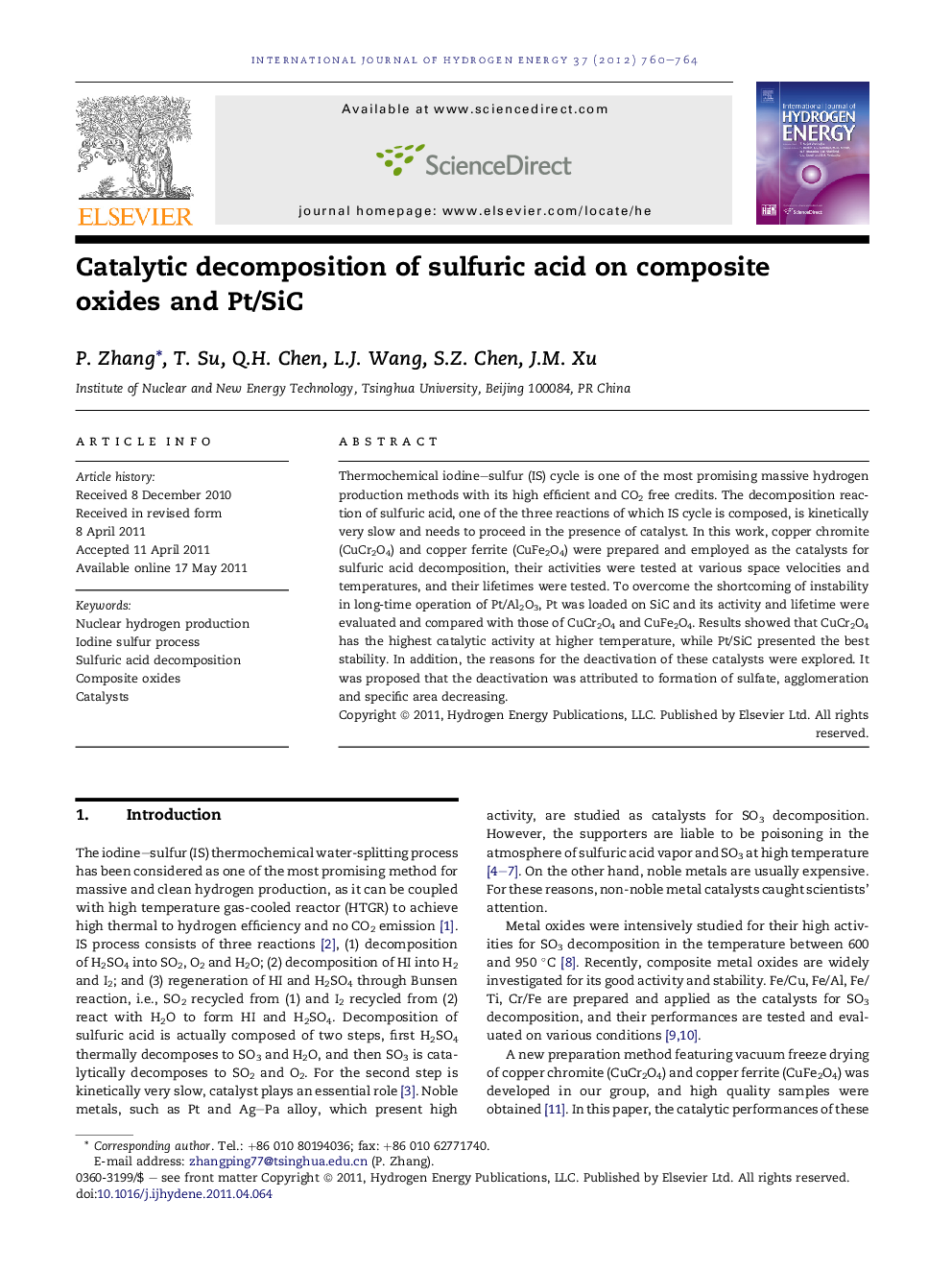| Article ID | Journal | Published Year | Pages | File Type |
|---|---|---|---|---|
| 1277193 | International Journal of Hydrogen Energy | 2012 | 5 Pages |
Thermochemical iodine–sulfur (IS) cycle is one of the most promising massive hydrogen production methods with its high efficient and CO2 free credits. The decomposition reaction of sulfuric acid, one of the three reactions of which IS cycle is composed, is kinetically very slow and needs to proceed in the presence of catalyst. In this work, copper chromite (CuCr2O4) and copper ferrite (CuFe2O4) were prepared and employed as the catalysts for sulfuric acid decomposition, their activities were tested at various space velocities and temperatures, and their lifetimes were tested. To overcome the shortcoming of instability in long-time operation of Pt/Al2O3, Pt was loaded on SiC and its activity and lifetime were evaluated and compared with those of CuCr2O4 and CuFe2O4. Results showed that CuCr2O4 has the highest catalytic activity at higher temperature, while Pt/SiC presented the best stability. In addition, the reasons for the deactivation of these catalysts were explored. It was proposed that the deactivation was attributed to formation of sulfate, agglomeration and specific area decreasing.
► CuCr2O4, CuFe2O4 and Pt/SiC were prepared and used as the catalysts for H2SO4 decomposition. ► The activities were evaluated in the temperature of 780–880 °C and liquid space velocities of 10–70 h−1. ► The stabilities of the three catalysts were tested. ► The deactivation was proposed to be caused by formation of sulfate and agglomeration.
